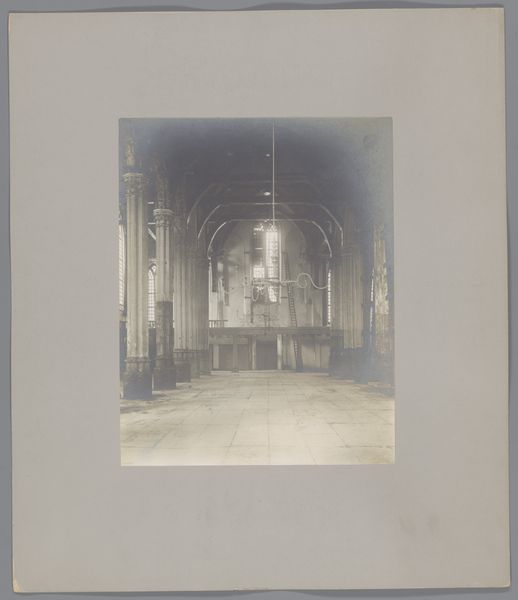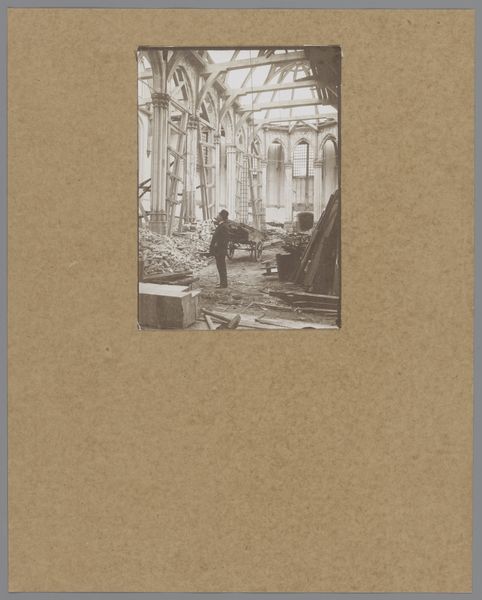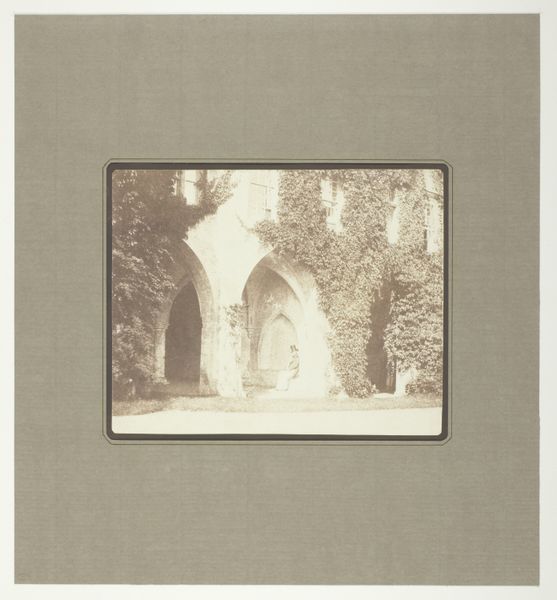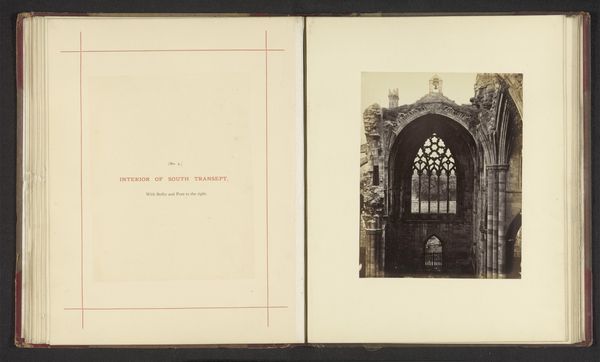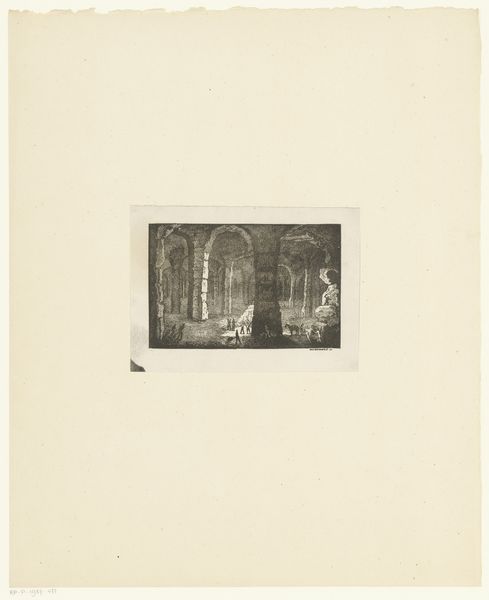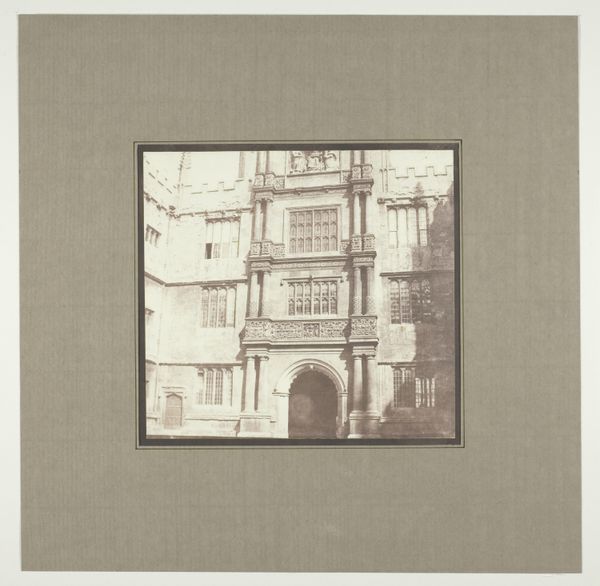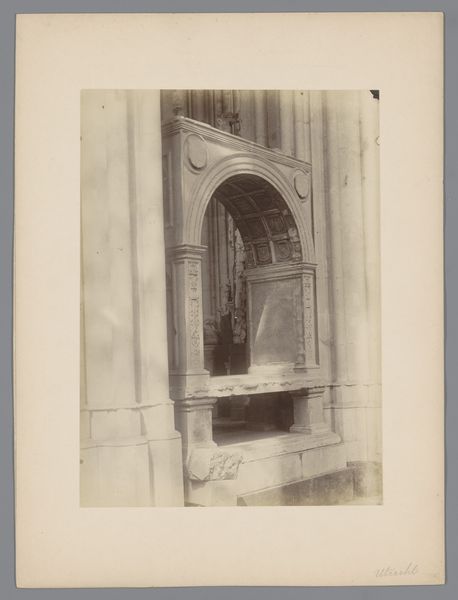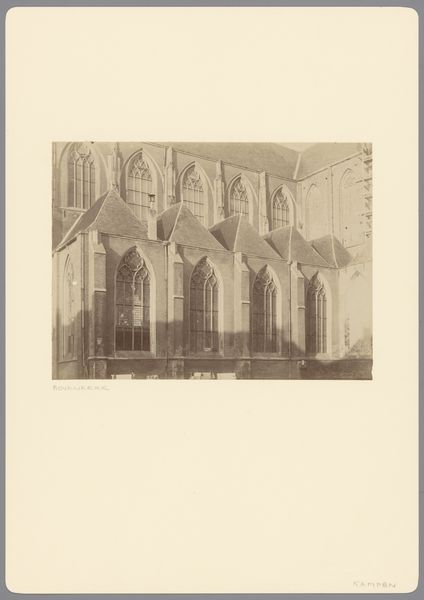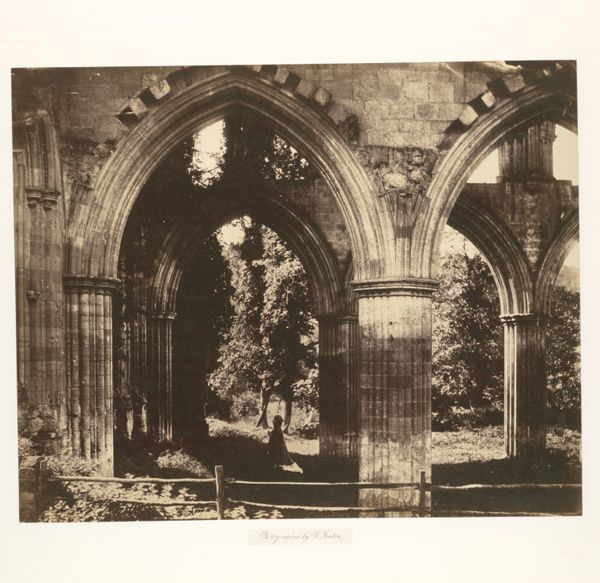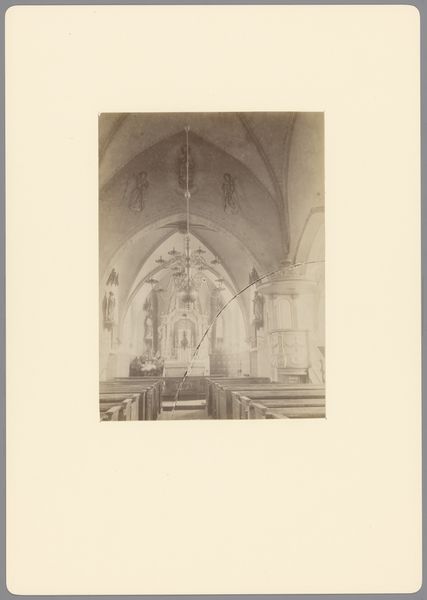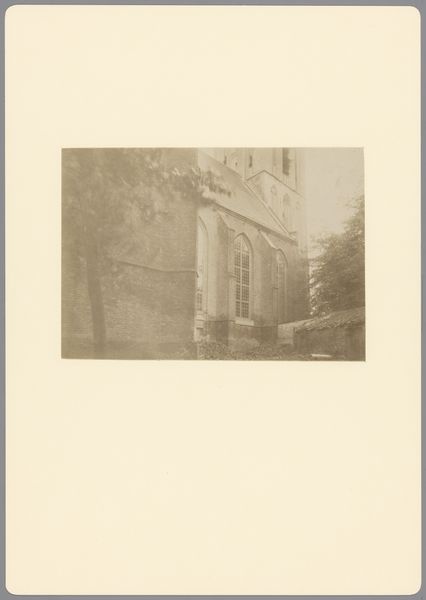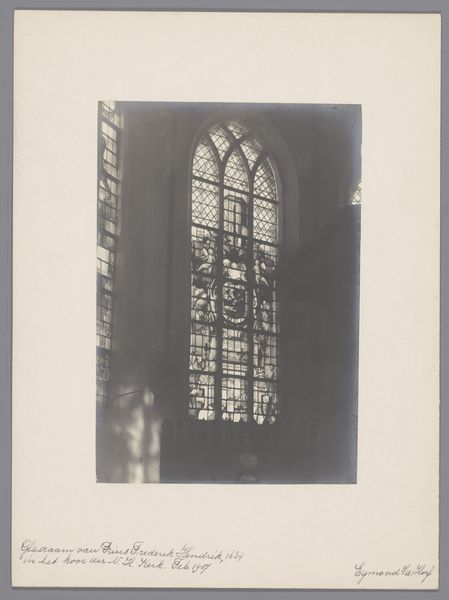
King's College Chapel, Cambridge, South Entrance c. 1845
0:00
0:00
print, daguerreotype, paper, photography, architecture
#
16_19th-century
# print
#
landscape
#
daguerreotype
#
paper
#
photography
#
england
#
architecture
#
realism
Dimensions: 17.4 × 16.7 cm (image); 22.8 × 18.5 cm (paper)
Copyright: Public Domain
Curator: Immediately, I’m struck by the sheer level of detail; it feels very textured and almost monumental despite its small scale. Editor: You’ve keyed into its deceptive scale; the Art Institute of Chicago holds this compelling work by William Henry Fox Talbot, titled "King's College Chapel, Cambridge, South Entrance," created around 1845. The image is created via photogenic drawing, a very early photographic process. Curator: Knowing the date helps clarify things. I mean, we are looking at a photo of an important place during the early emergence of photography. The process must have been incredibly painstaking and somewhat unpredictable at this point. What was the status of the College then, culturally? Editor: Cambridge at the time was a major center of not only learning but social discourse; religious debate was frequent, and institutions like King’s College were hugely influential. Photography also was debated hotly, with some embracing the potential for its scientific value while others felt threatened by the democratization of image production. It’s all intrinsically linked. Curator: Absolutely, thinking about how photography democratized image-making… What materials are we actually looking at? The choice of paper is probably more important here than in later photographic prints, when standardization was in full swing. Editor: Precisely. It’s paper sensitized with silver nitrate; the light would have been intense and the development is crude by later standards. Each image like this would have had inherent material variances, making the creation part art, part science. Early photographs of architecture, in particular, speak to a need for tangible documentation of English heritage during a time of unprecedented societal transformation. The choice of subject echoes similar artistic fixations across painting at that point. Curator: Right, so, it's interesting to think about how it portrays England, too, and these solid structures that suggest an almost unshakeable foundation of education, class, and religious structures. Seeing this photo must have resonated with a certain public who likely held onto an idea of order amid industrial and technological change. Editor: You are speaking about how access shapes social imaginaries—and this particular photographic style would appeal to elite consumers seeking tangible ways to claim, protect, or represent an identity in a period when photography's ability to disseminate visual information began challenging power structures, making photographs tools that affirmed social standing and recorded England during intense structural transformation. It all comes together beautifully. Curator: Agreed, now seeing it framed through the social contexts that informed the making really fleshes it out; I will always wonder now about that quality of paper and how it physically connects to its world.
Comments
No comments
Be the first to comment and join the conversation on the ultimate creative platform.
